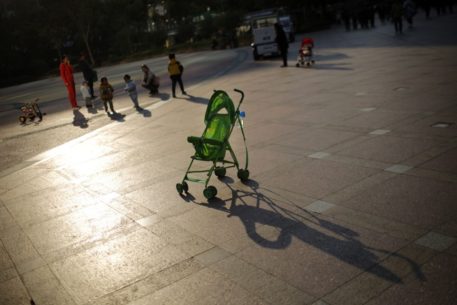Thousands of infants in the United States die in their sleep each year.
Sudden Infant Death Syndrome, or SIDS, is the leading cause of death for babies between 1 month and 1 year old in the United States. Many of these deaths are never explained, and may be linked to underlying medical conditions. But in plenty more cases, newborns die from sleeping in unsafe places.
New recommendations from the American Academy of Pediatrics, along with a new study published in the journal Pediatrics, underscore the dangers of certain sleep environments for babies under 1 year old—especially sofas and comfy chairs, which pose an “extraordinarily high risk of infant death,” according to the new guidelines.
The recommendations for the safest place to sleep remain the same: A baby should be put to sleep on his or her back in a crib or bassinet without any blankets, pillows, crib bumpers, or toys. No monitors should be in the crib, either—no, not even the ones that are marketed as breathing and movement trackers. Such devices, pediatricians warn, give parents a false sense of security about baby’s well-being and aren’t actually proven to prevent SIDS. Baby’s mattress should be firm, and the sheet should be tightly fitted.
There are some notable differences in the new recommendations, however.
For one thing, the AAP is placing a greater emphasis on the importance of room sharing, which cuts a baby’s risk of SIDS death in half. Ideally, baby and parents should sleep in the same room—though in separate beds—for at least the first year of baby’s life, the new guidelines say.
Another big change, and one that’s a bit more nuanced: The AAP is now encouraging parents who fear they might fall asleep during a middle-of-the-night feeding to feed baby in bed, rather than while sitting on a couch or squishy chair. (The adult bed should be cleared of any blankets or pillows to reduce the risk of suffocation and overheating.) These guidelines are aimed at breastfeeding moms, in particular, as a group that often reports falling asleep while feeding baby on the couch.
“If you are feeding your baby and think that there’s even the slightest possibility that you may fall asleep, feed your baby on your bed, rather than a sofa or cushioned chair,” Lori Feldman-Winter, a co-author of the new recommendations, said in a statement. “If you do fall asleep, as soon as you wake up be sure to move the baby to his or her own bed.”
RELATED STORY
Understanding Sudden Infant Death Syndrome
This doesn’t mean that bringing baby to sleep in your bed is considered safe. It’s not. Bed-sharing is especially dangerous for babies who are younger than 4 months. For infants of any age, there’s still the very real threat that a sleeping adult might roll over onto the baby. Other risks include suffocation, asphyxia, entrapment, falls, and strangulation. But the risk of a newborn dying on a sofa is even higher, since there’s a greater chance the baby will get wedged between cushions.
ADVERTISING
inRead invented by Teads
“One study showed that risk of death on a sofa is as high as 18 times higher than sleeping separately, while bed-sharing in bed [makes the] risk three to five times higher,” Fern Hauck, another co-author of the new AAP recommendations, told me.
The findings of the Pediatrics study, published on Monday, bolstered the need for these new recommendations. In a review of nearly 12,000 infant deaths, 13 percent of babies who died were found on a couch or chair. A much larger number of deaths—more than 50 percent of them—occurred in adult beds. But that doesn’t mean sofas are safer than adult beds. “More people bed-share with babies in bed, so there are more deaths that occur in beds,” Hauck told me. “However, surveys have reported that mothers have been taking their babies to couches or chairs to feed where, if they fall asleep, the risk of a death occurring is higher than in a bed.”
Many of the rest of the findings reflect what’s already been established in previous studies about sudden and unexpected infant deaths: Boys who died outnumbered girls, 58 percent to 42 percent. Most deaths occurred in the baby’s home (80 percent), under parental supervision (85 percent), and before the baby reached 4 months of age (69 percent). The babies who died outside of the home were twice as likely to have been found in a car seat or stroller than in any other sleep environment—a reminder that car seats and strollers aren’t safe for routine, prolonged sleep. In other words, once you get from Point A to Point B, baby should be removed from the car seat and placed on a flat sleep surface.
But that surface should never be a pillowy chair, sofa, or couch—with or without another person on it. The bottom line, says Rachel Moon, the lead author of the Pediatrics study: “We know that these surfaces are extremely hazardous.”

